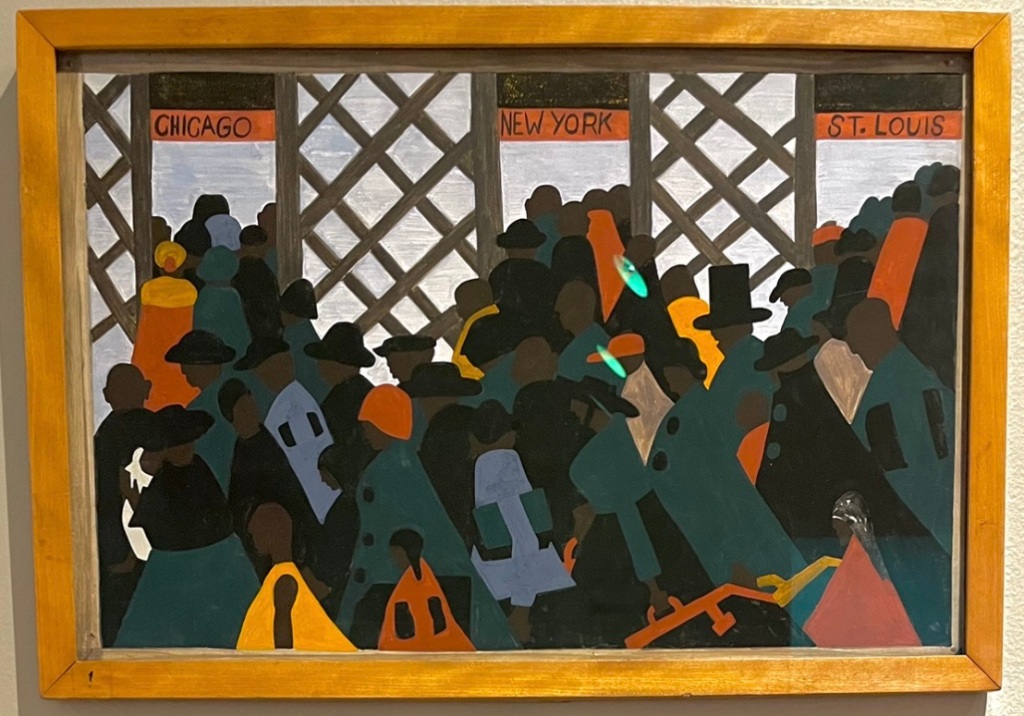Although he was born in Atlantic City and spent time in foster care in Philadelphia, Jacob Lawrence is really a New Yorker – one of the best known painters of the Harlem Renaissance, whose works remain a powerful chronicle of the African American experience.
After leaving Philly and reuniting with his mom in Harlem, New York, Lawrence began taking art classes and workshops sponsored by the government through the Work Projects Administration. His works included subjects such as Harriet Tubman, Frederick Douglass and Toussaint L’Ouverture. This painting from the NJ State Museum is part of his “Harlem” series:

At just 23, he completed the 60 panel “Migration Series” which depicts the mass exodus of over a million African-Americans from the rural South to the industrial North between the 1910s and ’20s. Jacob’s parents were part of this migration that fled north away from racial discrimination and Jim Crow laws in the south towards the job opportunities in the north.

Originally titled “Migration of the Negro” or “And the Migrants Kept Coming,” the series was purchased by The Phillips Collection in DC and MoMa in NY. They were the first works by a black artist purchased by MoMA. The series was split in half, with the odd numbered panels going to DC and the even numbers going to NY, where they remain today. We visited the Phillips Collection, where a room is devoted to the series.

The paintings are deceptively simplistic,


yet extremely powerful, with images that alternate between hope


and despair.


To ensure the colors remained consistent throughout the series, Lawrence planned all the paintings in advance and applied a single color at a time across all 60 panels.
For each panel Lawrence wrote a brief caption. In 1992, he updated the title of the series to “The Migration Series” and revised the captions, changing the term negro to either Black or African American. Originally the first panel was titled “During the World War there was a great migration North by Southern Negroes.” Lawrence changed it to “During World War I there was a great migration north by southern African Americans.”

Occasionally, the works are reunited and you can see all 60 together, but even split in half they beautifully and powerfully illustrate this moment in American history.
